China is one of the world’s earliest centers for crop cultivation. As far back as 5,000 years ago, people living in the Yellow River Basin had already learned to grow wheat. Ancient China is undoubtedly the birthplace of wheat-based food culture. For thousands of years, the seemingly simple wheat products have permeated every aspect of life in the country.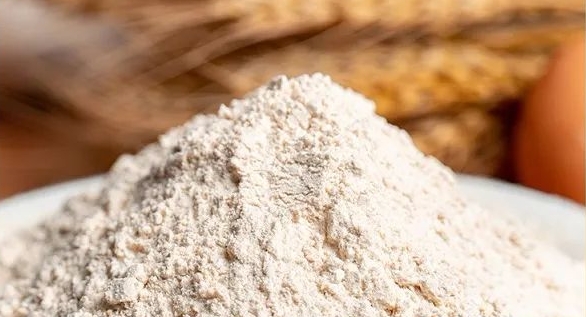
In China, when people refer to “wheat,” they primarily mean grains from the grass family, including wheat, barley, oats, rye, and buckwheat from the polygonaceae family. The term “wheat products” refers to foods made primarily from wheat flour. However, in ancient times, the term usually referred only to wheat, a naming convention that continues today.
Research indicates that wheat cultivation dates back to the late Neolithic period. Around 5,000 years ago, wheat was introduced into China. Once cultivation became widespread, it evolved from “grain consumption” to “semi-grain consumption,” eventually transitioning to a refined stage of wheat products. This process involved grinding wheat into flour, kneading it into dough, and adding various ingredients to create diverse wheat-based foods. In the Western world, bread emerged, while the East developed various products such as pancakes, buns, and noodles.
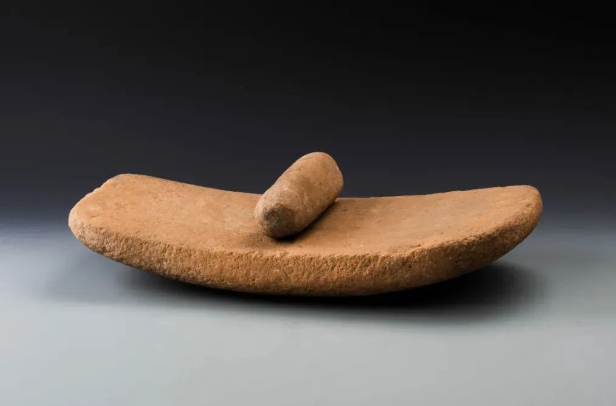
Neolithic Grinding Tools
- Wheat Product Preparation from Pre-Qin to Han Dynasties
Written records of early wheat production in China are scarce. For instance, the “Zhou Li” mentions, “The sacrificial offerings include rice cakes and flour cakes.” According to Zheng Xuan’s commentary, this refers to food made from ground rice and millet, steamed together. The “Ci Hai” dictionary defines “饵” as cakes. Xu Shen’s “Shuo Wen Jie Zi” states, “饈” means rice cakes. The “Mengzi” mentions that “Shun’s meals included steamed cakes made from grass,” which were already heated, resembling modern stir-fried noodles, making them portable and easy to consume.
The Han Dynasty marked the early development of wheat products in China, characterized by firm wheat cakes. With widespread cultivation of crops like wheat and millet, stone mills for producing flour became common among the people. During this time, significant advancements were made in wheat production techniques, leading to numerous documented varieties of “cakes.”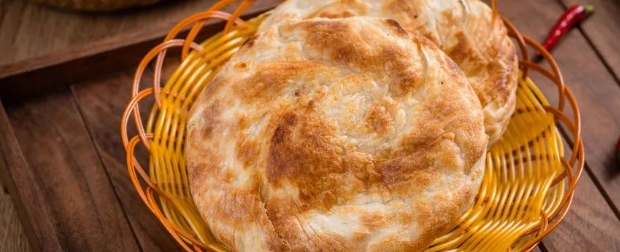
During the Han, Wei, and Six Dynasties periods, “cakes” became the primary form of wheat product. At that time, “cakes” referred to food made from wheat, millet, and rice flour, enjoyed by all social classes. Liu Xi from the Han Dynasty recorded in “Shiming”: “Cakes are made by combining flour and water; sesame cakes are made by adding sesame seeds.” Varieties included steamed cakes, soup cakes (the precursor to noodles), and baked cakes made with animal fat and honey.
After sesame was introduced to China via the early Silk Road, “Hu Bing” (baked flatbreads) also arrived with merchants from the Western Regions. These flatbreads, known for their long shelf life, were ideal for merchants traveling through arid deserts. The sesame-topped fermented flatbreads were called “Hu Bing.” According to Qing Dynasty scholar Tao Wei, “Hu Bing” refers to modern sesame cakes, indicating their enduring popularity.
The method of fermentation in Chinese flour-based products began with “酏食” and was summarized in writing by the Qin and Han to Wei and Jin dynasties. Eastern Han scholar Cui Shi noted, “Avoid eating boiled cakes and water-soaked cakes in summer,” advising against such foods due to their difficulty in digestion and the excessive sweating they caused. He described “wine-soaked cakes” made from fermented flour with wine.
The earliest record of wine-soaked noodles appears in “Shi Jing,” written in the early Northern Wei period. Jia Sixie’s “Qimin Yaoshu” discusses the advanced production methods of this era. The text details the fermentation methods and seasonal ingredient ratios for making cakes. By the mid to late Eastern Han Dynasty, wheat-based foods had become central to the dietary culture in the Yellow River Basin.
By the Northern Wei period, people understood the relationship between weather and fermentation, indicating a high proficiency in fermentation techniques. Varieties such as steamed buns, white cakes, baked cakes, and other fermented foods emerged. The invention of fermentation technology not only expanded the range of staple foods but also enriched dietary content, promoting the cultivation of wheat in northern regions. By the mid-Eastern Han period, wheat products had become the mainstay of dietary culture in the Yellow River Basin.(The Past and Present of Wheat in China: A Journey Through History and Culture)
2. Development of Wheat Products from the Tang to Yuan Dynasties
Starting in the early Tang Dynasty, shops specializing in wheat-based foods became common. In Chang’an, officials easily found foods like “Hu Bing” (flatbreads) on the streets. There were many styles of wontons, including those with wild vegetables and various flavors, with the “Twenty-Four Seasons Wonton” being particularly famous. The craftsmanship of wonton-making greatly improved during this period, allowing for twenty-four different varieties, especially eaten during the winter solstice, a custom that persists today. Qing Dynasty scholar Fu Cha Dun Chong explained that the shape of wontons resembles an egg, symbolizing the universe’s chaos, which is why they are eaten on this day.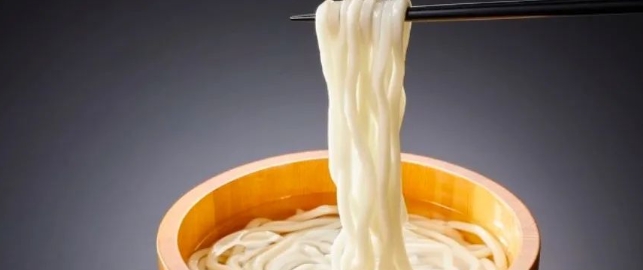
By the Song Dynasty, the flourishing commerce allowed wheat products to become part of everyday life. The “Dongjing Menghua Lu” records numerous shops specializing in buns, steamed buns, meat pies, and Hu Bing, with some establishments having over twenty ovens. In Kaifeng, prominent shops boasted fifty ovens each, indicating the thriving market and the growing popularity of wheat products. New methods like fermentation and oil-based dough were introduced, significantly increasing the variety of wheat foods. Shaped pastries could now resemble animals, with “Dream Liang Lu” documenting various types of buns, including large ones filled with fine ingredients and crystal buns.
Additionally, historical records indicate that the term “noodle” officially appeared during the Song Dynasty. With urban economic development, noodles evolved in many forms, including sliced, stretched, and spoon-fed varieties. Noodle types diversified to include vegetarian, fried, chicken, and three-flavor noodles.
During the Yuan Dynasty, the quality of wheat flour improved significantly. Wang Zhen’s “Nong Shu” notes, “Wheat flour can be used to make dumplings that are filling and nutritious. If crafted by skilled hands, they become a delicacy.” People began to appreciate the benefits of wheat flour, resulting in a wide array of products. Noodles, in particular, saw increased varieties, with palace menus listing over twenty types, such as spring noodles and yam noodles, while commoners enjoyed water-slippery noodles and red silk noodles.
3. Wheat Culture in the Ming and Qing Dynasties
During the Ming and Qing Dynasties, quality standards for wheat products surpassed those of earlier periods, with many varieties reaching a high level of craftsmanship. The preparation of dough became highly refined, as records from this time indicate a significant advancement in dough-making techniques. Different types of dough, including water-based, fermented, oil-based, and mixed grain varieties, each followed a well-defined process. Fermentation techniques further advanced, approaching modern methods as noted by Han Yi in “Yi Ya Yi Yi,” which described both large and small fermentation processes.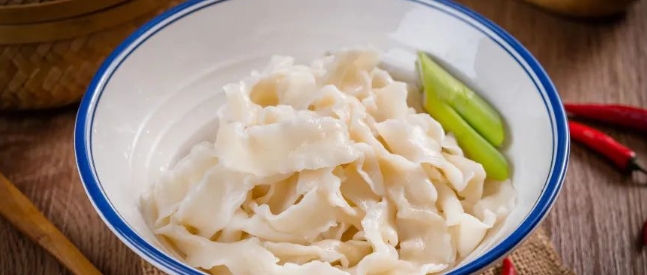
The methods for shaping wheat products became increasingly diverse. The Ming and Qing periods showcased a rich variety of forms, employing techniques such as rolling, cutting, stacking, twisting, and pressing. By the Ming Dynasty, stretched noodles could be wrapped around fingers, while Qing Dynasty artisans produced hollow, fine noodles. Various shapes emerged, including lotus leaf, reed, comb, and ingot shapes.
Noodle production also advanced further, incorporating various ingredients into the dough to enhance flavor and texture. “Song Shi Yang Sheng Bu” from the Ming Dynasty mentioned varieties like shrimp noodles, egg noodles, and radish noodles, marking an evolution from earlier types. During the Qing Dynasty, the exchange of culinary traditions among different ethnic groups flourished, with many cities featuring both Han and diverse minority noodle dishes. The Manchu people’s staple foods were varied and distinctive, made primarily from wheat, corn, and millet.
Wheat products became increasingly refined. This is evident in “Sui Yuan Shi Dan,” where Qing Dynasty food writer Yuan Mei reviewed various dishes, often using terms like “best,” “excellent,” and “unmatched.” Small steamed buns and wontons, for example, were praised for their delicate craftsmanship. Color coordination in dough preparation also became more sophisticated, with specific instructions for coloring pastries using natural ingredients.
The history of Chinese wheat products is long and rich, embodying significant historical depth and cultural sentiments. Over thousands of years, the evolution from simple “cakes” to a wide array of wheat foods reflects the development and transmission of Chinese culinary culture.